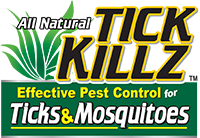Archives
Select Archives- March 2021
- July 2019
- June 2019
- May 2019
- March 2019
- February 2019
- January 2019
- November 2018
- October 2018
- September 2018
- July 2018
- June 2018
- May 2018
- April 2018
- March 2018
- February 2018
- January 2018
- December 2017
- November 2017
- October 2017
- September 2017
- August 2017
- July 2017
- June 2017
- April 2017
- March 2017
- February 2017
- January 2017
- December 2016
- November 2016
- October 2016
- September 2016

There are hundreds of species of ticks, which are small brown or black insects in the same class as spiders and other 8-legged pests. Most of this species are hardly bigger than a pin head or a poppy seed, and they feed entirely on blood to grow. They latch on to animals like deer, mice, rats, squirrels, birds, dogs, cats, and humans.
Each of a tick’s life stages includes gorging on blood. Once the adult tick reaches its final stage, it climbs on blades of grass, leaves, or other vegetation and extends its two front legs in a method known as questing. When the right host comes in contact with them, the tiny hooks on their front legs latch on, and then they find a spot to make a hole in the skin and start to feed.
Most ticks exist outdoors on logs, grass, wood, and even beaches. They prefer warm, moist areas of a body. When a tick gets on a human’s body, it’s likely to migrate to the armpits, groin, or hair. Once they’re in a suitable spot, they bite into the skin and begin to draw blood. Unlike most other bugs that bite, they typically remain attached to their host after they bite.
Visit Tickkillz.com to learn about safe tick control products to use on lawns where children and pets play. All Natural Tick Killz does not harm the environment or cause harm to such beneficial insects as bees, butterflies, and earthworms.
